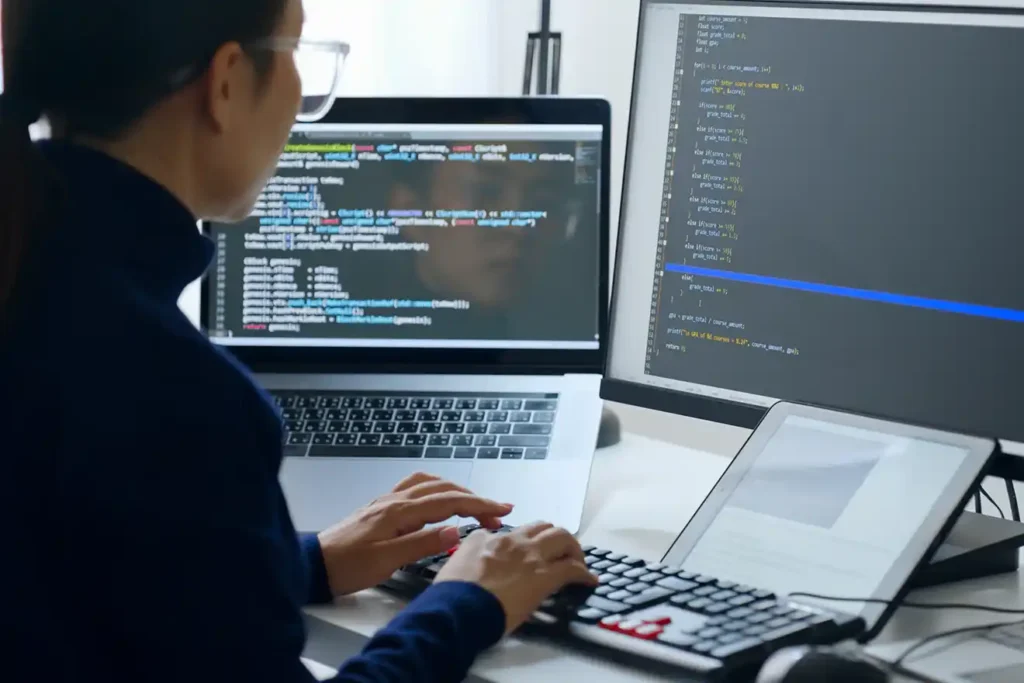Last updated September 19, 2025.
If you have digital systems, you need to manage patches for them. It’s that simple.
Yet patch management is anything but simple. It’s a complex and challenging, and it never stops.
Whether you work with a managed IT service provider or not, here’s everything you need to know.
Key takeaways:
- Patch management is not optional. Without it, your systems may fall prey to cyberattacks.
- It’s important to get a full audit of all systems under management.
- It’s crucial to establish a clear process for evaluating, testing, and deploying patches.
- If you’re struggling with patch management, Corsica Technologies can help.
What is patch management?
Patch management is the process of evaluating and applying software updates to systems. It’s an essential component in IT and cybersecurity management, ensuring that all systems are secure, running the latest version, and offering the best performance.
Patch management gets more complicated with more systems and integrations. With dozens of software providers and hundreds of applications, any given endpoint may have an infinite number of potential combinations.
You can manage patches in-house or engage a trusted partner like Corsica. Either way, it’s important to follow a structured process to ensure success.

What risks arise from delaying critical security patches?
Cyber criminals can exploit unpatched systems. Since vendors often announce patches publicly, criminals can use this information to identify vulnerabilities in unpatched systems. AI tools make it easy for threat actors to find systems that haven’t received a given patch.
Here are the most common risks associated with unpatched systems.
- Ransomware. Hackers may be able to install ransomware and activate it before your team becomes aware of the issue.
- Malware. Hackers can install malware if they can get access to a system through an unpatched vulnerability.
- Data breaches. Hackers can exfiltrate (steal) data from a system. Then they can sell it on the black market or use it to launch another attack.
- Supply chain attacks. Hackers may be able to gain access to a downstream system after gaining access to an upstream system.
How do I implement an effective patch management policy?
Two factors will determine the effectiveness of your patch management policy.
- How thorough the policy is
- How rigorously you implement it
1. How to create a thorough patch management policy
- You need a complete picture of all systems, both hardware and software, that require patches.
- You need to develop an inventory of all assets requiring patches.
- You need to keep this inventory up to date.
- You need a clear process for identifying, testing, and deploying patches. See below for details.
2. How to implement your policy rigorously
Use a combination of alerts and time blocking to ensure you follow your policy rigorously. Set up alerts to notify you of new patches for every system under management. Then set aside specific, regular blocks of time for reviewing, testing, and implementing new patches.
This is not a small commitment. Patch management takes time and effort, and it’s one of the biggest reasons why IT leaders turn to an MSP like Corsica Technologies for help. Whether you have internal IT resources or not, Corsica can manage your patches for you.
What’s the best patch management process?
Here’s the process that we use with our clients.
Overall patching requirements
There are four requirements that must be met to achieve the best possible patching:
- Devices must be online long enough to detect a new patch.
- Devices must be online long enough to download a patch.
- Devices must be online long enough to install patches.
- Devices must be rebooted to apply patches.
Patching process for workstations
- We automatically approve applications, critical updates, definition updates, drivers, feature packs, security updates, service packs, third party, tools, update rollups, and normal updates.
- We do not approve upgrades automatically (for example, Windows 10 upgrade to Windows 11).
- We will try to detect, approve, download, and install updates multiple times throughout the week.
- When a workstation receives a patch, it usually requires a reboot. Reboots are scheduled for 3:00 AM on a day of the week that the client chooses.
- If we could not reboot the device at the scheduled time, the user will see a prompt asking them to save their work and reboot when they’re ready.
Patching process for servers
- We automatically approve applications, critical updates, definition updates, feature packs, security updates, third party, update rollups, and normal updates.
- We do not approve drivers, service packs, tools, and upgrades. These kinds of patches can cause issues with server applications. We apply them interactively.
- We will try to detect, approve, download, and install updates only at the specified date and time. Servers should always be online, so we do not need to attempt updates multiple times throughout the week.
- When a server receives a patch, it usually requires a reboot. We schedule reboots on a day and time that the client chooses. Reboots are forced and users will not be prompted.
Which components should I prioritize first in a patch management program?
You should always prioritize critical updates and security updates. After that, you can prioritize updates according to your policies and operational needs. If you partner with Corsica Technologies, we’ll work together to determine the right patching prioritization for your organization.
Here at Corsica Technologies, we prioritize patches as high, medium, or low priority based on the following criteria.
High priority
- Critical Updates
- Security Updates
- Third Party
Medium priority
- Update Rollups
- Updates
Low priority
- Upgrades
Not monitored
- Definitions
- Drivers
- Feature packs
- Services packs*
- Tools
- Unknown
*Services packs often require significant time to complete. This means they can impact service. We defer service packs and install them during regularly scheduled preventative maintenance windows.

How do I test patches before wide deployment?
You’ll need a test environment that’s an exact copy of the production environment. You should also test one patch at a time on a given environment to rule out patch interaction as the cause of any issues.
Here’s the process you can use for testing.
- Copy the production environment to the test environment.
- Deploy the patch to the test environment.
- Run real-world workloads and activities on the environment.
- Monitor system response and performance. Note any anomalies.
- Based on rest results, decide whether to deploy the patch.
At scale, this process becomes time-consuming. This is one of the main reasons that companies turn to Corsica Technologies for patch management.
How can I measure patch management effectiveness and compliance?
You can measure patch management effectiveness with the right KPIs (key performance indicators). Use KPIs like patch compliance rate, mean time to patch, and vulnerability remediation rate. Depending on the systems in question, you may want to use more than one of these measures.
Here’s what each KPI means in detail.
Patch compliance rate
This is a measure of the percentage of systems that have received the latest approved patches. It’s expressed as the number of patched systems divided by the total number of systems under management.
Mean time to patch (MTTP)
This is a measure of the mean time required to implement a patch after it’s been released, or after a vulnerability has been disclosed. To follow best practices, you should establish SLAs (service level agreements) for patch deployment based on severity.
Vulnerability remediation rate
This is a measure of the percentage of vulnerabilities that are remediated within the SLA established for the relevant severity level.
The takeaway: Stay on top of patch management—or engage a partner to help
Patch management is a critical responsibility for IT teams. However, in today’s fast-paced environment, it can be challenging to stay on top of patches. If you need assistance, Corsica Technologies can help. We’ve worked with 1,000+ clients to solve their technology challenges. Reach out to us today to get started.

Ready to get control of patch management?
Reach out to schedule a consultation with our IT support specialists.












